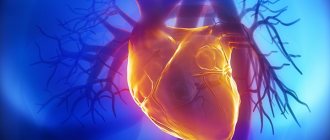Causes of increased triglycerides
An increased level of TG in the blood of an adult can be caused by certain types of diseases:
- diabetes;
- kidney diseases (renal failure , pyelonephritis , glomerulonephritis, etc.);
- liver diseases (liver cyst , cirrhosis, etc.);
- lack of thyroid hormones;
- genetic predisposition.
In addition to diseases, the occurrence of high TG levels can be caused by:
- binge eating;
- alcohol abuse;
- wrong lifestyle
- taking certain medications (contraceptives, beta blockers).
In a man, a high level of TG can be caused by alcoholism, smoking, and stress. The number of reasons for women is slightly greater. In their case, the increased content of fatty compounds in the blood may be associated with taking birth control pills, pregnancy, polycystic ovary syndrome , menopause , hormonal disorders, and infertility.
Natural causes of TG growth
An increase in the concentration of triglycerides and TG in the body does not always have pathological, pathogenic development factors. However, these are the majority.
If we talk about the minimum number of exceptions, they almost always have a nutritional origin in one way or another.
- Consuming large amounts of foods high in animal fat. Meat, especially red meat, and other foods. Artificial products and those that have been subjected to multiple processing are extremely harmful.
For example, fast food, semi-finished products with questionable production technology. To correct deviations, it is enough to give up junk food and normalize your own diet.
- Long-term adherence to a strict diet with low calories and insufficient nutritional value as a cause of elevated triglycerides occurs most often in women. Also in persons with complex diseases, with prolonged immobilization and other factors.
If such a patient begins to eat actively after recovery, there is a high probability that the body, at the level of cellular memory, will begin to more actively store fats.
This will not lead to anything good. It is necessary to gradually adjust the diet and introduce new products into it. Otherwise, a sharp jump in body weight and triglyceride concentrations cannot be avoided.
- The change also occurs during peak hormonal states. Since they are not diseases, they cannot be classified as pathological. Puberty, puberty, pregnancy, the proximity of the menstrual cycle, its active phase, as well as the early stages of the transition to menopause are identified as the reason for the increase in TG concentration. When reproductive function fades, a person enters a stage of low hormonal levels.
There is usually no need to do anything special. If dangerous changes develop, treatment is prescribed according to the profile.
The norm of triglycerides according to return in the plate
There are certain standards for the content of these substances in the blood. They differ in children and adults; the table below shows the norms for an adult. Since the normal level of triglycerides in the blood in women differs from the norm in men, below, for convenience, the table is divided into female (by age) and male halves (also divided by age).
| Age | Norm for a man (mmol/l) | Norm for a woman (mmol/l) |
| 15-20 | 0,45-1,81 | 0,40-1,53 |
| 20-25 | 0,50-2,71 | 0,41-1,48 |
| 25-30 | 0,52-2,81 | 0,42-1,63 |
| 30-35 | 0,56-3,01 | 0,44-1,70 |
| 35-40 | 0,61-3,62 | 0,45-1,99 |
| 40-45 | 0,62-3,61 | 0,51-2,16 |
| 45-50 | 0,65-3,70 | 0,52-2,42 |
| 50-55 | 0,65-3,61 | 0,59-2,63 |
| 55-60 | 0,65-3,23 | 0,62-2,96 |
| 60-65 | 0,65-3,29 | 0,63-2,70 |
| 65-70 | 0,62-2,94 | 0,68-2,71 |
What does an elevated TG level indicate?
In fact, a high level of triglycerides in the blood can indicate a high risk of developing diseases such as:
- hypertonic disease;
- pancreatitis;
- stroke;
- hepatitis B, liver cirrhosis;
- vascular atherosclerosis;
- cardiac ischemia.
Of course, this is not a complete list of all diseases that can arise as a result of elevated TG levels. That is why it is very important to start treatment immediately.
Triglycerides and cholesterol - what are the differences and similarities?
Despite the fact that both cholesterol and triglycerides, in essence, are the same lipids (i.e. fats/fat-like substances), their functions are completely different. Although, they are EQUALLY vital/important for us! The main tasks of cholesterol (CS) are to participate in the production of vitamin D, adrenal hormones, sex hormones, as well as ensuring the normal functioning of the brain and immune system (including reliable protection against cancer). In addition, cholesterol forms the sheaths of nerve fibers and is the “protective frame” of the cell membrane. The main task of triglycerides (TG) is to provide our body (partly “built” by the above/mentioned cholesterol) with energy (by burning calories from the “reserve”). That is, to give us the opportunity to live, and when necessary, to effectively “fight for survival.”
How to find out if your TG level is high (signs)
A high level of TG in the blood, in itself, does not cause symptoms. If the increase was caused by genetics, it is accompanied by fatty deposits under the skin (xanthomas). The patient's weight may increase sharply. Rarely, people with high levels of triglycerides in their blood may experience pancreatitis. Then a person may experience:
- sharp abdominal pain;
- nausea;
- vomit;
- loss of appetite;
- heat.
High cholesterol levels due to elevated triglycerides may also occur. All this suggests that a person has a high level of TG in the blood.
Reasons for increased and decreased indicators
If there is a significant deviation from the TG norms, this indicates metabolic disorders and the development of diseases of various types. Increased content may have the following reasons:
- diseases of the cardiovascular system (ischemia, hypertension, atherosclerosis);
- disruptions in the functioning of the nervous system;
- gout;
- decreased thyroid function;
- obesity, chronic alcoholism;
- increased sugar levels;
- glucose absorption disorders;
- renal failure.
Systematically elevated TG levels (without proper treatment) can be fraught with the development of diabetes mellitus, atherosclerosis, and myocardial infarction. In such a situation, cholesterol and blood sugar should also be controlled.
Elevated levels of triglycerides in the blood can trigger the development of diabetes.
Low values are less common. When studies have confirmed reduced levels, the following pathologies can be suspected:
- chronic forms of lung diseases;
- hyperfunction of the thyroid gland;
- poor nutrition;
- damage to kidney tissue;
- myasthenia gravis;
- ischemic stroke.
If abnormal triglyceride levels are detected during testing, action should be taken as soon as possible. If left untreated, the situation can get out of control.
Preparing for triglyceride tests
Triglyceride levels are determined using a blood test. Before taking a laboratory test, you should not eat food for 8-15 hours (you should not eat fatty foods for 2-3 days), strictly early in the morning.
Any blood test can show an error if a person drinks alcohol, fatty foods, or engages in intense physical activity. All this should be excluded several days before blood sampling.
What are triglycerides in a biochemical blood test?
Triglyceride or trig is a type of fat that the human body obtains from food, converting calories into energy. High triglycerides are not necessarily an indicator of heart disease, but they can reduce blood flow to the underlying muscle, causing serious health problems. People with excess cholesterol often have high TG levels. Testing triglycerides in a biochemical blood test is carried out together with the lipid spectrum. This survey determines:
- total cholesterol level;
- TG;
- LDL (bad cholesterol);
- HDL (good cholesterol).
How to normalize TG levels
Treatment of high TG levels is carried out in two main ways:
- lifestyle change;
- treatment of a disease that provoked an abnormal increase in triglycerides in the blood.
Most often, if no serious diseases are identified, a healthy lifestyle is enough for patients to lower the level of TG in the blood, but if the patient is sick, the disease requires drug treatment, which will be prescribed by a doctor.
Lifestyle changes
A healthy lifestyle is the most effective way to treat high TG levels. The patient should not drink alcohol or cigarettes. The diet must be carefully reviewed, overeating is strictly prohibited. You should eat mostly low-fat foods (such as seafood).
By the way, a diet based on seafood is the most effective for combating high TG levels.
Products with a high content of triglycerides (products made from the main component - flour, drinks with substances and chemical compounds that give foods a sweet taste) should be avoided It is important to eat foods high in omega-3 fatty acids, which include some types of fish.
Physical activity should be present throughout the patient's day. Regular exercise will help lower TG levels, increase good cholesterol levels and, among other things, improve your health.
The patient must adhere to a strict diet that includes:
- whole grain cereals;
- vegetables fruits;
- lean meat;
- low-fat dairy products;
- mono- and polyunsaturated fats (omega-3, omega-6 fatty acids);
It is absolutely unacceptable to eat such products as:
- fatty products;
- sugar;
- legumes;
- alcohol;
- canned food;
- sweet, honey
A few months after starting treatment, TG levels should decrease and return to normal. Your weight should also drop. However, the patient should undergo another examination and donate blood, since it is quite possible that the treatment will not end for him yet.
Drug treatment
If lifestyle changes do not have the desired effect, you should resort to treatment with medications. Your doctor may prescribe the following medications:
- Omega-3 (omega-3 is found not only in food, but also in medications that are easily tolerated and reduce triglyceride levels by 50%);
- Fibrates (these medications weaken the liver's ability to release triglycerides);
- Vitamin B3 (reduces the activity of the substance that produces triglycerides);
- Statins (can reduce TG levels, although intended to lower cholesterol).
Complementary and alternative treatments at home
In addition to the basic methods of treating elevated TG levels, you can use traditional medicine methods. Below are recipes for some effective remedies:
- Flax seeds ground in a coffee grinder should be added to food little by little.
- You need to grind dried linden flowers to a powdery consistency and use a spoon at least three times a day.
- 200 grams of beans should be soaked overnight, and in the morning add a little salt and boil. The volume of beans should be divided into several servings and consumed throughout the day. Treatment should last a month.
- Grind dry dandelion roots to a powder consistency and consume a spoonful twice a day, thirty minutes before meals. Treatment lasts six months.
- Grind several cloves of garlic, horseradish rhizome and lemon using a meat grinder, mix, and combine with boiled water. Place the mixture in a cool place overnight. Take 10 grams before sitting down at the table. After each dose, take the drug with a spoon of honey.
Juice therapy can also help combat high TG levels. Its essence is to drink various juices in the morning for 5 days that help reduce the amount of triglycerides:
- Day 1 . Juice from celery roots (30 ml), carrots (50 ml);
- Day 2 . Juice from carrots (50 ml), cucumber (40 ml), beets (40 ml). Beetroot juice should be taken cold;
- Day 3 . Juice from apples (45 ml), carrots (60 ml), celery (45 ml);
- Day 4 . Juice from cabbage (30 ml), carrots (50 ml);
- Day 5 . Orange juice (30 ml).
Juices can be mixed, but it is better to drink separately, at intervals of 30 minutes.
Attention!!! Alternative methods of treatment can only be used with the permission of the attending physician.
Methods for stabilizing triglyceride levels
You can increase your TG level in this way:
- cure the diseases that led to this condition;
- reduce vitamin C intake to the daily norm;
- establish a high-calorie but balanced diet.
Reducing the indicator is possible using the following methods:
- reduce the consumption of sugar-containing foods and drinks, fructose;
- lead an active lifestyle;
- replace heavy fried and fatty foods containing unhealthy fats with foods that include healthy polyunsaturated fats (nuts, olive oil, chicken and fish) or medium chain triglycerides (medium chain fatty acids or MCT oils);
Healthy and unhealthy fats
- take medications that reduce fat (fibrates, niacin, Omega-3 or statins).
The last point should be strictly under the supervision of a doctor, since such therapy often causes side effects.
It is worth knowing that medium chain triglycerides (like Omega-3) are used in therapeutic nutrition for people who are unable to naturally absorb fats. This is due to the fact that medium chain triglycerides do not contain cholesterol, have a smaller number of atoms (from 6 to 12) compared to other vegetable or animal oils (more than 16), and are therefore easier to absorb and digest.
Medium chain triglycerides, along with a vitamin complex, proteins and carbohydrates, are included in the probe mixture for cancer and mentally ill people.
In addition, medium chain triglycerides are widely used by athletes who need a lot of energy, gym goers who want to quickly build muscle mass, and people trying to lose weight.
Forecast
A high level of TG itself does not lead to death, but the diseases that it entails may well lead to it. This is why it is important to begin treatment immediately after diagnosis. Controlling the level of TG in the blood becomes the main task of patients with high levels.
If the patient does not start treatment (or does not make adequate efforts to reduce high levels of triglycerides in the blood), he is at high risk of developing diseases that can lead to serious consequences.
Prevention
Prevention when the TG index in women deviates from the norm, both upward and downward, is the same:
- Proper nutrition depending on the deviation from the norm of TG concentration in the blood;
- Quitting bad habits - chronic alcohol and nicotine addiction;
- Lead an active lifestyle and adequately load the body daily;
- Women undergo lipid biochemistry every 6 months after menopause.
What do triglycerides show in a blood test?
Checking the levels of fats inside the veins and arteries is part of a lipid profile that determines the presence of heart disease. Triglycerides in a blood test indicate the possibility of developing hypertension, coronary heart disease, myocardial infarction, etc. For adults, the procedure is recommended every 4-6 years. Children need to be tested once before age 10 to determine if there are any congenital abnormalities.
- Pork in foil in the oven: cooking
- Thirty-ninth week of pregnancy
- How to cook crucian carp











